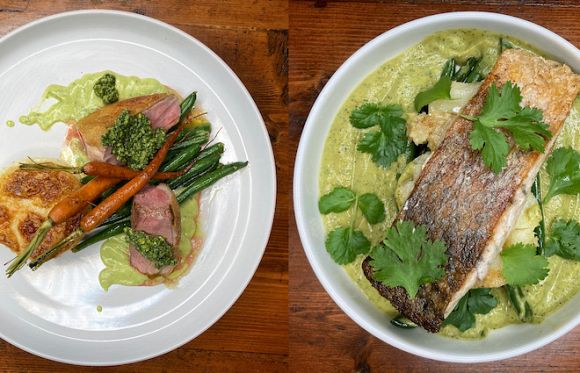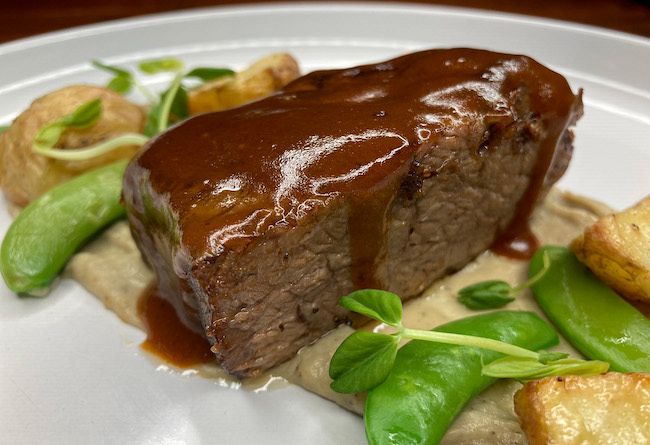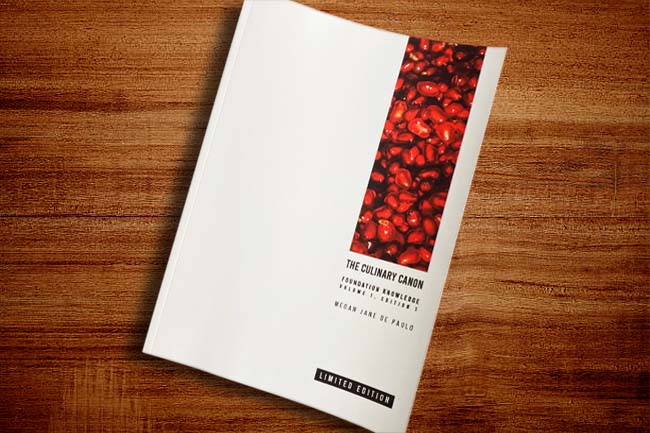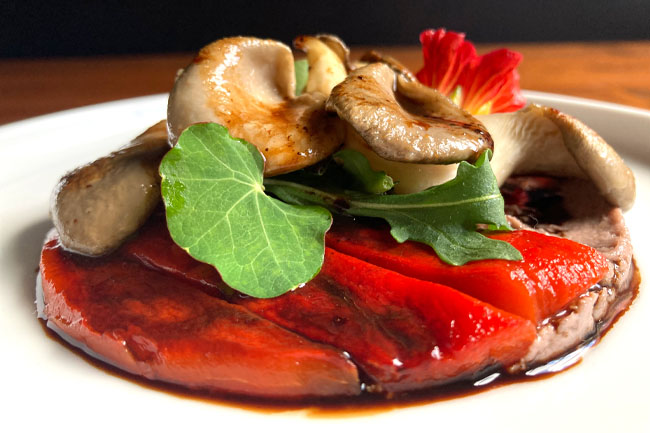Megan Jane de Paulo places miso on a pedestal, showcasing its flavour-filled versatility in sweet and savoury recipes.
AT FACE VALUE, miso is a thick paste made from fermented soybeans and is mostly known as the base for miso soup.
However, this umami-rich, salty paste is a complexity of flavours – depending on how it’s fermented and what ingredients are added – and is adaptable to a range of different applications both savoury and sweet.
The magic ingredient in creating miso is kōji (Aspergillus oryzae), a fungus which is also used in making soy sauce, sake and shōchū. Kōji is first added to steamed white rice, then cultivated and added to other ingredients and fermented and aged to create it.
There are three main flavours of miso: 白味噌 (shiro miso) white miso, 赤味噌 (aka miso) red miso and 合わせ味噌 (awase miso) blended miso.
Shiro miso is a mix of fermented rice, barley and soybeans with the shortest fermentation time. It’s the lightest-tasting type of miso: almost sweet and not as umami-loaded as the others. It works well in compound butter, glazes, marinades and sweet dishes.
Awase miso is a blend of white and red miso for when you want a hit of extra umami but not the full umami of red. Think of it as the rosé of miso.
Aka miso is the most umami-laden of the miso types, red to almost black in colour due to longer fermentation and a higher percentage of soybeans in the mix.
There are still many questions in regard to the health benefits of miso. It does have a high salt content and is not always suitable for people with salt issues. Fermented products can help promote good gut bacteria if unpasteurised and not overcooked.
When using miso in soups or broths, always add it at the end after the pot has been removed from heat. You should remove some of the liquid and muddle the miso in until it’s loosened, then add it back into the main pot.
For dressings or marinades, thin the miso paste with oil or water before adding it to other ingredients.

RECIPE
Miso Scrambled Eggs | Scrambled eggs | Miso compound butter
Miso compound butter
This makes more than you need for one serving of eggs; leftover miso butter can be stored in the fridge.
Try it on freshly grilled meats as a finishing butter, or toss it with cooked vegetables.
- 100g unsalted butter, very soft but not liquid
- 20g white miso paste
Mix together until completely combined. Chill in fridge.
Miso Scrambled Eggs
This makes three eggs per serving, which is a pretty generous amount. Serve on toasted sourdough, sprinkled with aonori (green seaweed flakes), sesame seeds, or chilli powder for something bitier.
- 3 eggs
- 10ml cream
- butter, plain, knob for cooking
- 5g miso butter (adjustable for taste)
- salt
This will go fast. You will need everything ready at hand, or the eggs will overcook.
Beat the eggs and cream together.
In a frypan on low-medium heat, melt butter. Do not let it bubble or brown.
Add eggs/cream mix.
With a spatula, gently push the egg away from the side of the pan when it’s starting to set, towards the centre, creating folds of egg.
When 70% of the liquid has gone, add miso butter and fold through.
Remove from heat.
Serve on toasted bread. Salt to taste (sparingly — miso is already salty). Sprinkle on desired seasonings.

Miso Caramel
White miso is recommended for this, but, really, miso varies so much you need to experiment and know the miso you have.
I used a common brand here in Australia (Hikari Miso), but even the white miso can be quite strong-tasting, so I only use about 10g. Other brands might require more.
The longer you boil the caramel, the thicker it becomes, depending on how you want to use it. Since this caramel was mixed into a crème pâtissière, it was quite runny.
- 150g caster sugar
- 60ml water
- 250ml heavy cream (35%+ fat)
- 10g white miso paste
- 40ml extra water (for mixing the miso in)
Muddle the miso paste into the water until no lumps are left.
Heat cream in a saucepan – remove from heat before it boils – set aside.
Place sugar and water in a deep saucepan and stir until sugar is dissolved.
Refrain from stirring while the mix cooks to a golden caramel colour (the pan can be swirled only). Remove from heat.
Carefully drizzle pre-heated cream into caramel — carefully because this stuff is as volatile as lava, basically.
Whisk through until smooth.
Add in miso+water and whisk.
Place back onto heat and, whisking occasionally, heat until the mixture thickens to desired consistency.
Cool and store in a sterilised jar in the fridge.
Megan Jane de Paulo is a Melbourne-based, inner-city latte sipper and social media provocateur. You can follow Megan on Twitter @gomichild.
Related Articles
- How to adapt rich recipes for reuse and reinvention
- Hot cross buns early and all sorts a hot topic
- Mushroom season means magic meals
- Perfectly measured Black Sesame Panna Cotta: Immeasurable pleasure on a plate
- Bourbon Braised Beef Cheeks to tantalise the taste buds
 This work is licensed under a Creative Commons Attribution-NonCommercial-NoDerivs 3.0 Australia License
This work is licensed under a Creative Commons Attribution-NonCommercial-NoDerivs 3.0 Australia License
Support independent journalism Subscribe to IA.













